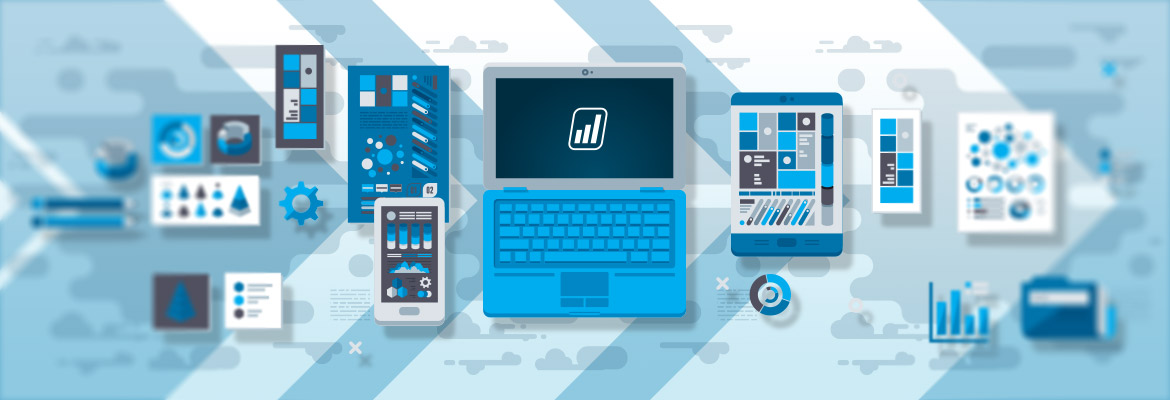Top 6 Data and Analytics Trends for 2017

Data has long been emerging as a driving force in the decision making process for businesses. No longer do you need to answer questions with intuition and feelings, nor should you. If you are capturing relevant information, you can be using it to make smart, strategic moves that drive growth and emphasize your competitive advantage.
The demand for more data continues to change the business landscape, and 2017 is no exception. As analytics systems become mission critical, organization leaders, CIO’s, and other executives should keep a close eye on the following trends.
1.) Self Service Business Intelligence (BI) – Organizations are beginning to see how their own data offers incredibly valuable insight, and they need to find more ways to monetize it. More specifically, leveraging their existing resources and gaining adoption for using the data. However, the biggest issue for a lot of companies is finding a way to do so. For many, it’s not possible to spend hundreds-of-thousands on advanced data analytics systems, or to hire data analysts, simply because their business is too small. Fortunately, 2017 will see a rise in the need of user driven business intelligence solutions. These self-service BI solutions do not require months of planning and preparation or even the development of new IT infrastructure. Instead, you can simply connect your data sources and get to work. These platforms, such as Jet Enterprise, enable the short time-to-implementation with an out-of-the box solution for increased productivity and the fast return that small and medium sized businesses need.
2.) Sensemaking – The world around us is changing rapidly, and businesses need to rapidly adjust in order to remain competitive. Because of this exponential increase year over year for the need to adapt quicker, the process known as “sensemaking” will become increasingly important to utilize. Sensemaking, is the creation of reality as an ongoing accomplishment that takes form when people make retrospective sense of the situations in which they find themselves. This is leading to the knowledge that decisions should not only be made by executives or senior level employees. Instead, organizations should empower employees who provide insight from experience that translates to data, as these employees face the customer, sell a service, or build a product. These types of insights provided by employees, combined with a data set, are considered to be a mixed data approach. This will merge internal and external data, as well as structured and unstructured data, to provide new, valuable understandings into your business that can take it to a new level.
3.) Digitization Process Adoption– A buzzword that popped up a few years ago, digitization, is the process of turning any kind of video, sound, image or analog signal into a digital format that will be understood by electronic devices and computers. Now a well-recognized asset, the information captured by digitization is often easier to share, access, and store than the original format. Digitization will continue to transform archaic business processes into computer-supported processes and online networks. A recent McKinsey study predicts that digitization is going to cut costs up to 90% and there could be huge improvements in turnaround times as well. So, in order to get ahead of your competitors, you should implement new data sources with devices that connect to the internet and redesign models to drive updated business processes.
4.) Visual Data Discovery Will Evolve – With data discovery tools, the query and visualization process have traditionally been considered to be one in the same. However, the amount of data for the query is now reaching a volume level that is overwhelming, even for those who are data analysts. Most of the time, data analysts can begin their reviews into the data captured with visual discovery tools in order to understand the structures or to look for patterns in data sets. But as more of the traditional reporting and queries are starting to be carried out by machine learning and artificial intelligence due to automated and large data sets, many data scientists and analysts are seeing their positions evolve. They will need to become more creative because the demand for the visual component with data discovery and analytics tools will continue to increase in 2017 and beyond.
5.) Preemptive Data Analytics- Most data analytics to date has been after an event, and viewed as being reactive. This year will bring moves to real-time and pre-event analysis and action, priming your business to become proactive. This will begin the unique value creation for businesses, not just from processing and understanding transactions as they happen and then applying to models, but by actually doing it before the consumer, or someone within your organization logs a to-do. This will have a transformative impact on the ability of a business to identify new revenue opportunities, cut costs, and improve customer relationships.
6.) Hybrid Cloud Storage – Businesses are looking to make the most out of cloud storage, yet due to reasons like compliance and regulation, not all data can be sent to the cloud. Research conducted by ActualTech Media has revealed that hybrid cloud adoption is going to double in 2017. In addition, 60% of research respondents said they have data that cannot be migrated to the cloud. “Public cloud has made a huge impact on the storage industry, and while it’s the venue of choice for many data types, at present, it’s not right for everyone in every circumstance,” said Jon Toor, Chief Marketing Officer, at Cloudian. “For those who need to keep specific data types on premises, a hybrid approach can deliver the best of both worlds, especially when their on-premises and cloud storage technologies are highly compatible with each other.” Furthermore, this mixed model doesn’t prevent companies from compiling and getting the data they need or adopting the other trends in this article. Reporting and BI solutions, like those from Jet Reports, provide ideal platforms for complete analytics even when your ERP and data sources are being held in a hybrid cloud model.






